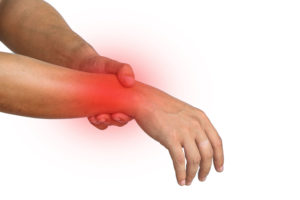
What is Reflex Sympathetic Dystrophy (RSD) or Complex Regional Pain Syndrome (CRPS)?
Reflex Sympathetic Dystrophy (RSD) and Complex Regional Pain Syndrome (CRPS) are basically synonyms for the same condition. They refer to the nervous system going out of control and generating severe incapacitating pain. RSD was the earlier name. It was renamed CRPS as it was felt to be a more accurate description of the condition.
What causes CRPS? Are there triggers?
There are two types of CRPS. CRPS I is precipitated by an injury to a tiny nerve or minor nerve; CRPS II refers to this severe pain condition when it arises from damage to a major nerve.
Any nerve trauma can trigger CRPS. Some of the most common causes are knee surgery, wrist fractures, and nerve trauma from injections.
What are the symptoms of CRPS/RSD?
CRPS/RSD has early and late stage symptoms. Early stage symptoms can include a hot limb, swelling and reddish discoloration. As the condition continues, the previously hot limb can start to feel icy cold and can appear as having bluish or purplish discoloration. Hence, even during hot temperatures, a person suffering latter stage CRPS/RSD may still feel the need to cover the limb to avoid feeling too cold. Also common in later stages is hair loss in the extremities and brittle nails.
Burning pain is a hallmark of CRPS. CRPS is also characterized by allodynia and hyperpathia. Allodynia refers to the body’s abnormal response to a stimulus. For example, if I touch you lightly and you jump—or even covering a leg with a blanket produces intolerable pain. Hyperpathia refers to pain lasting much longer than it ordinarily should.
CRPS bombardment of chemical pain signals to the spinal cord and brain can cause sensitization of these structures resulting in the spread of its severe pain to other parts of the body. The chronic pain can also impair immune, endocrine, digestive and mental functioning.
How is CRPS diagnosed? Why is it difficult to diagnose?
Because many physicians are not adequately informed regarding the signs and symptoms of CRPS/ RSD, it is often overlooked or misdiagnosed. This is dangerous because the chance for reversing the condition has a short window of opportunity. Most doctors would say six months or less.
Apart from signs such as hotness or coldness in the limb, discoloration, hair loss, shininess of skin, as well as the symptoms of severe burning pain, allodynia and hyperpathia, there are also tests that can aid the diagnosis: nerve block injections to see if the pain goes away, and during early stages of the condition triphasic bone scans to see increased blood flow in the affected limb and MRI.
How is CRPS treated?
There are various approaches to its treatment. In addition to helping to diagnose CRPS, nerve blocks can also lessen its pain. This includes physical therapy and physical activity. To the extent it can be tolerated, they work to minimize severe pain by activating gating (blocking) mechanisms in the spinal cord that impede pain information to the brain where pain is registered. Medications can also be very helpful. Examples include anti-epileptic drugs, certain anti-depressant medications, and ketamine treatment.
How to choose a lawyer if you have CRPS/RSD?
Of course, it is important to inquire regarding the lawyer’s experience and success in handling CRPS/RSD cases. Also assess the lawyer’s ability to answer your questions regarding the condition and the legal issues and challenges that the condition poses.
Why is neuroscience important in evaluating CRPS cases?
Physicians can tell you if you have CRPS and prescribe and render treatment. However, neuroscience can offer a deeper understanding regarding how and why the pain of CRPS is so severe; why it can spread to other parts of the body; how and in what way it can affect the brain and spinal cord; and how it can impair the immune, digestive, endocrine systems, etc. These can be crucial understandings to project the future issues that you may be seeking compensation for.
Michael Flomenhaft shares his perspectives on CRPS/RSD below:
